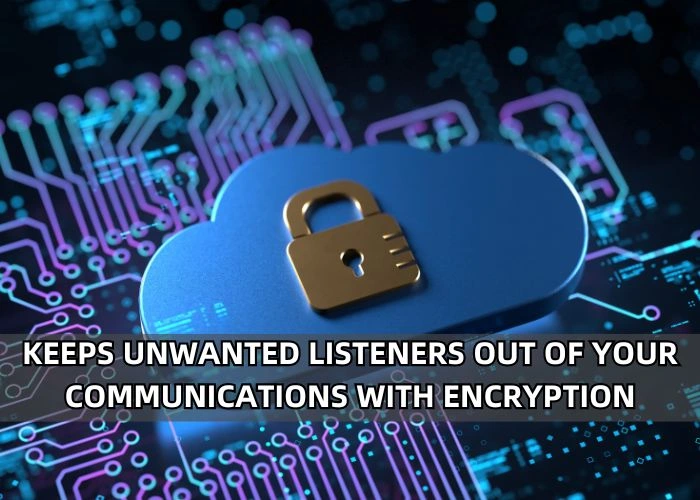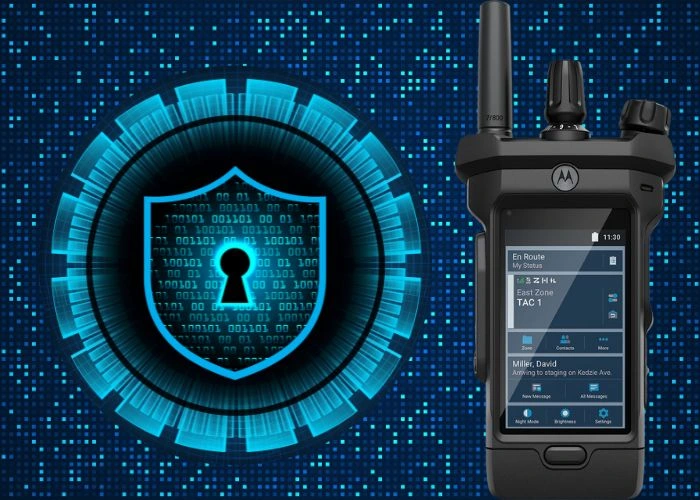The Advanced Encryption Standard (AES) is an encryption algorithm widely used across the globe to secure data. Established by the U.S. National Institute of Standards and Technology (NIST) in 2001, AES is the federal standard for encrypting sensitive information due to its robustness, efficiency, and speed in processing large volumes of data.
AES has been widely adopted by government agencies, emergency response teams, and private companies because of its superiority to older encryption methods. Unlike its predecessors, such as Data Encryption Standard (DES), AES offers a significantly larger key size which enhances its resistance to brute-force attacks.
AES encryption is employed in a variety of applications, including securing transmission across the internet, encrypting files and databases, and safeguarding sensitive communications in wireless networks. AES is designed to perform efficiently on a wide range of hardware platforms, from smart devices to commercial two-way radios, making it a versatile choice for various applications.
The Basics of AES Encryption
AES encryption serves to secure data by transforming readable information into an unintelligible format, ensuring that only authorized parties can access the original content. AES employs symmetric key encryption, meaning the same key is used for both encryption and decryption, which supports efficiency in processing data.
AES encryption has been adopted by the U.S. government primarily due to its robust security features, efficiency, and flexibility. Its 128, 192, and 256-bit key sizes offer a higher level of security than shorter keys that can deter modern cryptanalytic attacks. This makes it an ideal choice for securing classified information related to national security.
How Does AES Encryption Work?
AES’s design consists of a series of linked operations, such as substitution, permutation, and mixing, arranged in rounds to transform plaintext into ciphertext. It supports key lengths of 128, 192, and 256 bits, making it highly secure against brute-force attacks, which use trial-and-error methods to hack encryptions.
Once it’s been scrambled, the ciphertext (encrypted data) is sent via a secure channel and decrypted by the same key, converting it back into plain text. Similar in principle to coded languages used in espionage, this sequence allows for efficient communication while ensuring that no sensitive information becomes compromised.
Why AES Is the Gold Standard for Encrypted Communications
Due to its robust design and larger key sizes, AES is considered more secure and resistant to brute-force attacks than older encryption methods. AES operates on a block cipher principle with key lengths of 128, 192, or 256 bits, providing a significant increase in possible key combinations compared to older standards like DES, which has a 56-bit key.
This exponential increase in key length makes brute-force attacks far less feasible within a reasonable time frame, even with modern computational power. Additionally, AES employs a refined and efficient algorithm that includes multiple rounds of substitution, permutation, and mixing of the data, which enhances its resistance against cryptanalysis attempts.
The Role of AES in Two-Way Radio Security
Because of its versatility and efficiency, AES has become a key feature of modern two-way radios. It enhances privacy in two-way radio communications by providing robust data protection through strong encryption techniques.
By transforming sensitive voice or data communications into a secure format that can only be decrypted by someone holding the correct key, AES effectively prevents unauthorized access and eavesdropping.
The Cybersecurity and Infrastructure Security Agency (CISA) strongly encourages all state, local, tribal, and territorial public safety agencies to adopt AES encryption. In applications such as law enforcement and emergency services, AES adoption ensures that critical information cannot be intercepted, minimizing the risk of breaches or disruptions by bad actors.
More agencies and organizations across sectors are utilizing AES encryption in their communications systems. MOTOTRBO infrastructure products, such as repeaters, controllers, and gateways, are popular choices for encrypted communication. The security features of these systems reduce the likelihood of unauthorized duplication or interference, leading to more secure communication and greater signal reliability.

AES Encryption Standards in Two-Way Radios
AES encryption in two-way radios typically operates at different levels based on key length, which determines the strength of encryption. The three main AES encryption levels used in radios are:
- AES-128: The most commonly used AES encryption standard in commercial and public safety radios. It provides a strong balance between security and processing efficiency. AES-128 is resistant to brute-force attacks but less secure than higher-bit versions.
- AES-192: While less commonly used in two-way radios, AES-192 offers enhanced security over AES-128 by using a longer key, providing a stronger defense against cryptographic attacks.
- AES-256: The highest level of AES encryption, AES-256 is used in high-security and military-grade communications. It’s extremely resistant to brute-force attacks due to its longer key length and is used by government agencies and the military where maximum security is essential.
The Federal Communications Commission (FCC) regulates the use of encrypted radio communications to balance privacy concerns with public safety and security needs. Generally, the FCC permits encryption on certain frequency bands, particularly for public safety and critical infrastructure communications, ensuring that sensitive information is protected.
However, the use of encryption on personal or commercial radio systems, such as citizens band (CB) or amateur radio, is generally prohibited to maintain transparency and accessibility for monitoring purposes in emergencies.
Compliance requirements include obtaining necessary licenses, using approved encryption standards, and ensuring that communication systems can be accessed by authorized agencies when necessary. These regulations aim to prevent misuse of encrypted communications while allowing secure, lawful transmissions for essential services.
How To Choose an AES-Encrypted Two-Way Radio
When selecting a two-way radio with AES encryption, there are several critical factors to consider to ensure it meets your specific needs. First, evaluate the level of encryption offered; AES-256 is the most secure, but it may not be necessary for every application.
It’s also essential to ensure that the radio’s range capabilities are enough to allow clear communication within your required operational area, taking into account any potential obstructions.
Additionally, assess the interoperability of the radio with your organization’s existing communication systems to avoid compatibility issues and optimize performance. Highly versatile MOTOTRBO mobile radios are compatible with a range of frequencies and features and can be smoothly integrated into your operations without downtime or lapses in communication.
Battery life and durability are also high priorities for two-way radio systems, especially if the radios will be used in harsh environments or for extended periods. There is a wide variety of rugged MOTOTRBO portable radios that can provide reliable sound clarity and security in a variety of settings.
With a long battery life and a revolutionary chemical-resistant casing, the MOTOTRBO R7 is a popular choice in many industries where people work in challenging environments, including manufacturing, construction, and transportation.
Is AES Encryption Secure?
While theoretical vulnerabilities exist with any encryption standard, practical attacks on AES are computationally infeasible with current technology due to its large key sizes of 128, 192, or 256 bits. For someone to hack AES, they would have to exhaustively search the entire key space — a task that requires an astronomical amount of computational power and time.
Nevertheless, the security of AES depends heavily on factors such as secure key management and implementation, meaning that human errors and poor practices can create vulnerabilities even if the algorithm itself is robust.
AES encryption is not just necessary for government or military applications. Amid the ongoing threat of cyberattacks, it has become vital for a wide range of industries that handle sensitive data, including finance, healthcare, insurance, hospitality, and e-commerce.






